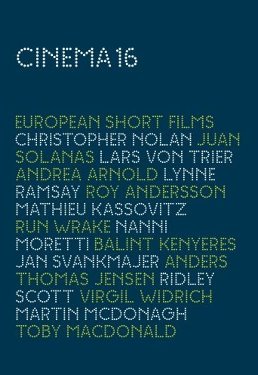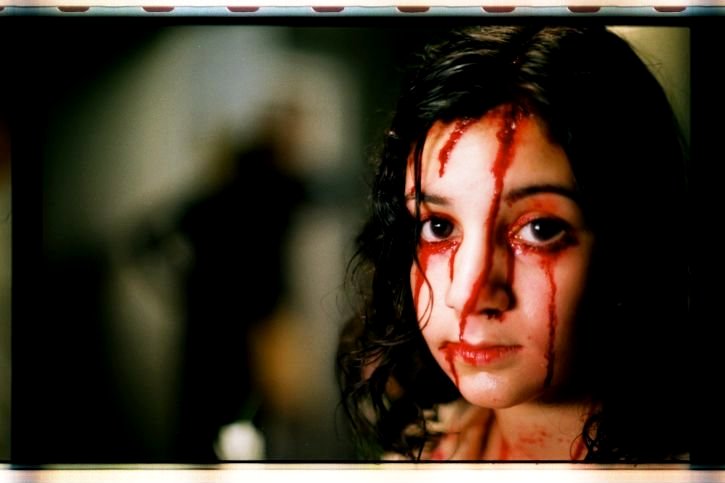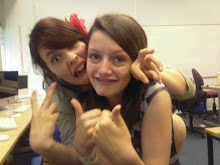How did you use new media technologies in the construction and research, planning and evaluation stages?
When carrying out my research I used several short film DVDs that were available through school, the one I used most being the Cinema 16 DVD, but I also did a lot of my research on the internet.
I looked at several short film websites when carrying out initial research, including the BBC short film website, www.chewtv.com, the FutureShorts website and youtube.com. Each of these websites had a wide range of short films that I was able to watch and analyse to establish a comprehensive range of codes and conventions.
The website that I used most was www.chewtv.com as they specialise in unusual, usually animated shorts that were very interesting for me. Around the time of Halloween, also, they had a special page devoted to horror shorts, and this was very useful for my research as it provided me with ideas and inspiration for my own horror film.
Youtube.com was useful both in research and production. For research I was able to watch many short films but it was also useful for the whole production process. Once I had a concept I was able to embed videos from youtube to highlight my intertextual links and inspirations, providing more understanding to my film.
The Futureshorts website provided links to their Youtube site, which had many live-action shorts that developed interesting ways of telling stories and warping reality. As Youtube is a global search engine I was also able to search for more independent short films.
The Internet Movie Database (www.imdb.com) is a very useful website that I frequently use, particularly when researching as it contains reliable information about all sorts of films, from indie to Hollywood blockbuster. This allowed me to research intertextual links that my film might have with ease, meaning that my film was more relevant to the rest of the film industry. Imdb is also useful as it had information about directors and actors that I was able to incorporate into my film.
The first task that we got charged with was creating an anamatic that could be aired to the rest of the class. To do this I used a Canon A620 camera that I’d borrowed from a friend. We were then asked to upload the pictures and produce an anamatic using Final Cut Express 4. Previously I had only used Sony Vegas and iMovie 6.0 to edit clips, so at first I found Final cut difficult to get to grips with. However, once over the initial hurdle of finding out what functions did what, I found it much quicker and more efficient to use.
Again we used www.blogger.com to produce our media blogs, just as we had for the AS coursework task. This was helpful as I felt familiar with the website, and knew how to upload videos, pictures and word documents. This year I was able to use the advanced setting that allowed much easier editing of my blog, despite the odd glitch of having to change back to the old editor in order to be able to upload videos.
In conjunction with Blogger I used the site http://www.scridb.com/ to upload word documents such as my storyboards, screenplay and ancillary texts. This site allowed me to upload these things at PDF files and then embed them onto my blog. I used my home scanner to upload the images onto the computer, and this meant that I was able to sketch them out freehand and not on the computer which would have been much trickier.
For the ancillary task of the film poster, and my teaser poster as well, I used Photoshop Elements to manipulate images together. For both posters I had more than one image that I required to work in the same frame, and Photoshop helped me to do that using lasso, layering and magic wand tools. I was then able to convert the image into a JPEG file so that I could post it on my blog.
I was able to use the same model of mini DV camcorder that I used for my AS coursework, a Canon MD101. As I had previously discovered these cameras are easy to use although some of the settings are confusing and temperamental (for example the white balance function doesn’t always work properly). Similarly the zoom function has to be used with exact precision in order to get the correct speed. In one of my shots, the one revealing the arm on the ground, had to be slowed down in editing as I was unable to get the zoom tool to work slow enough. One flaw that these cameras have over a mini DVD camcorder is that the tape has to be manually rewound to the correct place in order to ensure previously filmed footage is not recorded over.
I chose to set part of my film at night time, and from previous experience I know that it’s very difficult to get a clear image on the mini DV camcorders when it’s dark, so I asked my friend’s mother (a director of independent films) if I could borrow a pag light and reflector screen. When using this equipment I was able to pick up much more of the scene that I would otherwise have been able to. I was also able to get light from the fire that I used, and when that was the main source of light it gave the shots an eerie feel that added to the overall sinister mood of the scene.
As one of the main problems with the AS productions was the low sound quality, the media department invested in a boom mic. Unfortunately, due to weather and unavailability of the equipment, I was unable to use it in my production, and this did mean that my sound quality was compromised. In the worst effected sections I was able to use a portable digital audio recorder. which creates mp3 files that I was able to upload onto the computer and use to over-dub the pre-existing sound. It was fairly simple to use unlike the boom mic it doesn’t come with a dead cat that would reduce the background noise. However, it was a vast improvement on the other sound I had, so it was a good idea to use this equipment.
 To produce my soundtrack I used both Ejay and Cubase. Ejay is a programme that specialises in dance music and so it was appropriate to use it for the diegetic music in the first scene. It’s a simple drag-and-drop programme that has pre-recorded music and vocals that I used to produce a successful track. For the second half of the narrative I wanted a more gothic soundtrack, and was able to use Cubase to produce this. On Cubase we, I and my composer, were able to change the input to different instruments so we could generate a unique track that fitted in specifically with my film. This process allowed me further understanding of how different instrument can be put together to create different and specific moods.
To produce my soundtrack I used both Ejay and Cubase. Ejay is a programme that specialises in dance music and so it was appropriate to use it for the diegetic music in the first scene. It’s a simple drag-and-drop programme that has pre-recorded music and vocals that I used to produce a successful track. For the second half of the narrative I wanted a more gothic soundtrack, and was able to use Cubase to produce this. On Cubase we, I and my composer, were able to change the input to different instruments so we could generate a unique track that fitted in specifically with my film. This process allowed me further understanding of how different instrument can be put together to create different and specific moods. Due to time constraints I used both Final Cut 4 and iMovie when creating my final piece. I was able to transfer footage easily between the two programmes, so when I required more complex editing I could do this in Final Cut, but the basic editing I found took less time when using iMovie. Being far more advanced that iMovie, Final Cut was able to help me edit my video and sound precisely, so that it all fit together as well as possible. In my original idea I had planned to use Final Cut’s split screen effect, but as I changed my idea this wasn’t needed in the end. However, when experimenting with this effect I was able to get used to using final cut, and learnt to use the programme efficiently. This effect could not have been used in iMovie as it only had one track for editing, in contrast to Final Cut’s 99 tracks.
Final cut comes with the application of Live Type, a programme which creates titles that can have effects and animations added onto them. I tried out a wide range of these effects to get a title that fitted in with my film, but after asking some of my target audience, and looking at the conventions of horror shorts I decided instead to use a simple fading title, white on black background. I still used Live Type, however, as the range of formatting tools is much wider than that of iMovie. I was able to use a gothic font to fit in with the genre that I wouldn’t have been able to use otherwise. Transferring Live Type files into iMovie is just as easy as into Final Cut, just drag it in to the track.
Throughout the production process I used the social networking site Facebook to air my rough cuts to my target audience (but also other audiences in order to establish an understanding of how different audiences respond to the same footage). This is an example of the new media that is available now, that makes film more accessible to everyone. It also meant that I was able to get a wider range of much more useful audience feedback than I would have got having just aired my film to my media class.
As we had to hand the film in on a DVD I used iDVD 06 to create a DVD project file. In iDVD one can select a theme and then adjust it so that can reflect the genre of the film. However, if the theme used is too complicated it can take much longer to code and burn the disc, and so I chose a fairly simple theme, just changing the background image to a still from the film to add continuity. Once all the files are uploaded and in place (and after I made sure it worked!!) it was very simple to press the burn button and let it work away. It does take a while to code at first, particularly if the files are very long, but in comparison a half-hour long project I have previously made, it was very quick.
Using all of this equipment and software has allowed me to produce a product that I feel is quite successful. I think that the narrative is interesting and unique, but has elements that people of my target audience, 15-25, can relate to (the idea of teenage relationships and the troubles that come with them). Although there are several things that I would like to improve on I think the overall opinion of my product has been positive. I preferred working on this project to working on the AS coursework task as I was able to stretch out and create a full narrative, rather than just an introduction to one.













































